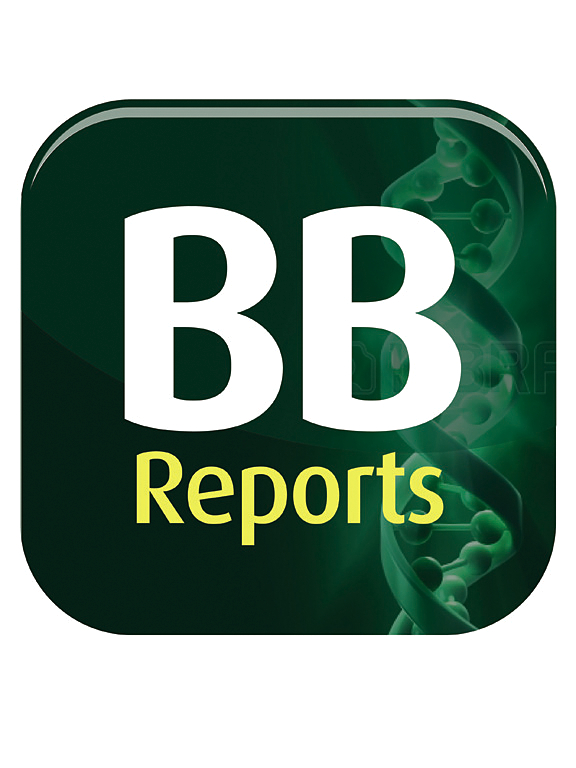磷酸二酯酶抑制剂对血小板功能的影响
IF 2.2
Q3 BIOCHEMISTRY & MOLECULAR BIOLOGY
引用次数: 0
摘要
磷酸二酯酶(PDEs)通过调节细胞内cAMP和cGMP水平在调节血小板活性中起关键作用。通过适当的抑制剂调节PDE-2、-3和-5活性已被发现可降低血小板活性,从而降低血栓形成。我们的目的是研究布司特对血小板活化、脱粒和聚集的影响。因此,我们使用非特异性PDE抑制剂IBMX和PDE-5抑制剂西地那非作为对照。血小板激动剂胶原相关肽(CRP-A)、二磷酸腺苷(ADP)和凝血酶受体激活肽(TRAP6)诱导不同的激活途径。western blot检测PDE抑制作用。采用流式细胞术、光透射聚集法和体外血栓形成法评估血小板活性。IBMX对所有血小板激动剂的抑制作用显著降低了血小板的活化和聚集。布司特优先抑制血小板中的PDE-3。布司特降低ADP和TRAP诱导的血小板活化和聚集,但对CRP-A无抑制作用。单用西地那非不降低PDE活性、血小板活化或聚集。然而,西地那非和伊布司特联用对血小板活化有加性作用。有趣的是,所有测试的PDE抑制剂都显示出对血小板依赖性血栓形成的显著影响。综上所述,PDE抑制剂对血小板功能的影响主要受两个因素的影响:抑制剂的药理靶点和cAMP/cGMP与诱导的活化途径的相互作用。ADP通过P2Y12和TRAP通过PAR1激活血小板对PDE抑制剂的反应比CRP通过GPVI激活血小板的反应更大。本文章由计算机程序翻译,如有差异,请以英文原文为准。

Effect of phosphodiesterase inhibitors on platelet function
Phosphodiesterase enzymes (PDEs) play a pivotal role in regulating platelet activity by modulating intracellular levels of cAMP and cGMP. Modulation of PDE-2, -3 and -5 activity by suitable inhibitors has been found to reduce platelet activity, and thus thrombus formation.
Our aim was to study Ibudilast effects on platelet activation, degranulation and aggregation. Therefore, we used the nonspecific PDE inhibitors IBMX as well as the PDE-5 inhibitor Sildenafil as controls. Platelet agonists collagen-related peptide (CRP-A), adenosine diphosphate (ADP) and thrombin receptor activator peptide (TRAP6) were used to induce distinct activation pathways. PDE inhibition was quantified by western blot analysis. Platelet activity was assessed using flow cytometry, light transmission aggregometry and in vitro thrombus formation.
Inhibition of all platelet PDEs by IBMX substantially reduced platelet activation and aggregation in response to all tested platelet agonists. Ibudilast preferentially inhibits PDE-3 in platelets. Ibudilast decreased platelet activation and aggregation induced by ADP and TRAP, but not CRP-A. Sildenafil alone induced no reduction in PDE activity, platelet activation or aggregation. However, the combination of Sildenafil and Ibudilast had an additive effect on platelet activation. Interestingly, all tested PDE inhibitors demonstrated a significant effect on platelet-dependent thrombus formation.
In conclusion, the effect of PDE inhibitors on platelet function is influenced by two primary factors: the pharmacological target of the inhibitor and the cAMP/cGMP interaction with the activation pathways induced. Platelet activation by ADP via P2Y12 and TRAP via PAR1 showed a greater response to PDE inhibitors than platelet activation by CRP via GPVI.
求助全文
通过发布文献求助,成功后即可免费获取论文全文。
去求助
来源期刊

Biochemistry and Biophysics Reports
Biochemistry, Genetics and Molecular Biology-Biophysics
CiteScore
4.60
自引率
0.00%
发文量
191
审稿时长
59 days
期刊介绍:
Open access, online only, peer-reviewed international journal in the Life Sciences, established in 2014 Biochemistry and Biophysics Reports (BB Reports) publishes original research in all aspects of Biochemistry, Biophysics and related areas like Molecular and Cell Biology. BB Reports welcomes solid though more preliminary, descriptive and small scale results if they have the potential to stimulate and/or contribute to future research, leading to new insights or hypothesis. Primary criteria for acceptance is that the work is original, scientifically and technically sound and provides valuable knowledge to life sciences research. We strongly believe all results deserve to be published and documented for the advancement of science. BB Reports specifically appreciates receiving reports on: Negative results, Replication studies, Reanalysis of previous datasets.
 求助内容:
求助内容: 应助结果提醒方式:
应助结果提醒方式:


